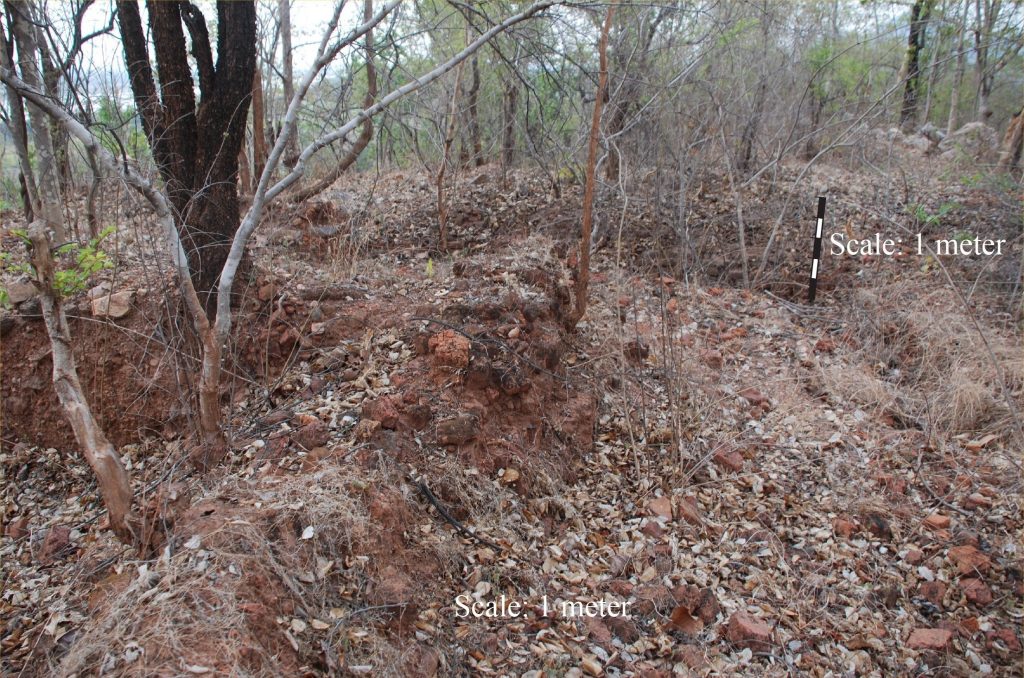Sambalpur: Wall structures constructed with bricks dating back to early Gupta period were found in Sambalpur district, a report said. The bricks were first observed by members of the Indian National Trust for Art and Cultural Heritage (INTACH), following which they informed the research scholars. Subsequently, the team visited the site August 15, it said.
The breakthrough has been achieved by a team of faculty and researchers of the History Department of the Sambalpur University. The team members claimed the remnants of the ancient period are spread to neighbouring Angul and Boudh districts.
The remains of the civilization have been discovered at Badamal under Jujumura block and are spread over a stretch of 2 km from Durgapali to Bada Bazaar under Sambalpur civic body limits. Historians claimed that human settlement of the ancient civilization is present in the region and this is evident from the remnants of burnt bricks.
The shape of the bricks resembles the bricks used during the Gupta period. However, carrying out an archaeological survey to find newer details is not an easy task as large-scale construction work is taking place in the area due to rapid urbanisation.
The matter came to the fore after scribes Deepak Kumar Panda, Kulamani Patel and historians Bibhudendra Mishra and PK Mishra stumbled upon the remains of the ancient civilization and informed the History Department of the university.
A team of historians led by Prof Pradip Kumar Behera and comprising historians Nabin Kumar Sahu, Khirasindhu Barik and Khageswar Bhoi of Sambalpur museum visited the site and carried out a detailed examination. Later, they visited the bank of Harihar creek, Asuragad, in the district and conducted various examinations.
During the excavation, they discovered precious stones like garnet, berry, aquamarine, amethyst, corundum, carnelian, agate and chalcedony stones, glass beads, necklaces, stone and iron implements as well as open air and well protected tools manufacturing units.
A rectangular shaped human settlement was developed at the place during the Mauryan era. Similar settlements have been discovered at other places as well. Remains of a mega construction have also been found on top of Sindol hill which is about 45 km to the south of Sambalpur town. This place bears resemblance to the leaning temple of Huma in Sambalpur town and the remains available at Durgapalli. It is believed that Sambalpur town is as old as the Gupta era or might be older than that.
A detailed examination and archaeological survey could shed more light on this theory, the team members said. This apart, glass bangles and glass wares of various colours at Tentulipalli valley on the Mahanadi river bank and at Krumapadar near the river bank have been discovered.
The team members claimed that iron melting was prevalent in 7th century BC. Similar remains of brick-made structures, iron implements and guard-wall around well made of burnt bricks have been found at Tarporgad.
A circular fort-like structure that has been discovered in Chhattisgarh was also found at Tarporgarh. Remains of burnt bricks have been found at Manmunda block of Boudh district and in Budhigarh near Madanpur-Rampur in Kalahandi district which are probably from the Gupta era, Prof Sahu said.
PNN
